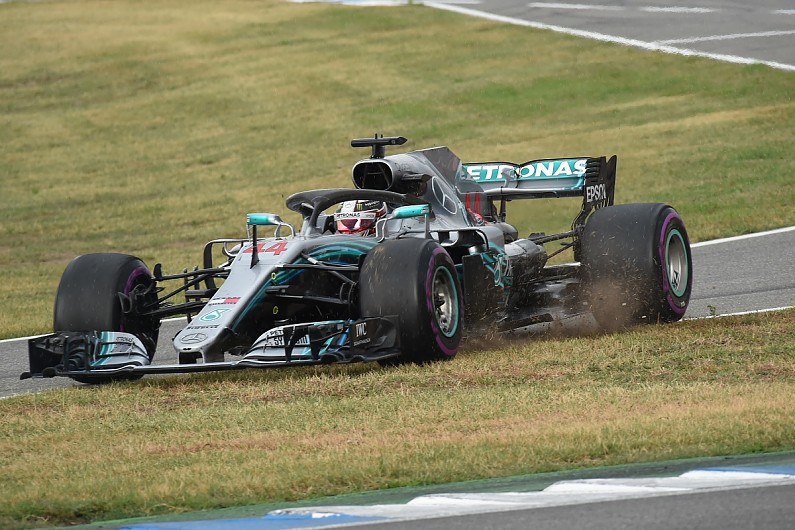Get unlimited access
You have only 5 articles remaining to view this month.
FIA Formula 1 race director Charlie Whiting says there was no exact precedent for the pit entry offence committed by Lewis Hamilton in the German Grand Prix.
Winner Hamilton escaped with a reprimand after changing his mind, abandoning the pit entry and cutting across the grass back onto the track.
The FIA stewards explained that the penalty was a light one mainly because the incident happened under the safety car, and there was no danger to other drivers.
Whiting said that made it “quite a lot different” to the pit entry infraction that earned Kimi Raikkonen a five-second penalty in the 2016 Azerbaijan GP, as in that instance “there were two cars close to each other at extremely high speed.”
One of the unusual aspects of the Hockenheim case was that Hamilton did not actually contravene the regulation about staying to the right of the bollard when entering the pits – changing course after correctly passing it.
“It’s to make sure drivers don’t enter or leave the pits in a dangerous way,” said Whiting of the bollard rule.
“Coming into the pits, we don’t want drivers diving in at the last minute – that was the reason for the bollard – but it’s less clear whether it’s dangerous if a driver decides to abort having already gone past a bollard which is more or less the point of no return, and crossed back the other way.
“There are quite a few instances of drivers not passing the right side of the bollard when they are entering the pits.”
He also contrasted the Hamilton incident to one in the 2017 Spanish GP where Pascal Wehrlein earned a five-second penalty for missing the bollard after a late call to stop: “He came into the pits. Lewis didn’t come into the pits. He was going to, but he didn’t actually.”
Hamilton himself had received a reprimand for a bollard offence in British GP practice in 2013.
Whiting explained that at Hockenheim a section of the FIA’s International Sporting Code, rather than the bollard requirement, had led to the stewards summoning Hamilton and Mercedes.
“There is another rule in the sporting code which says the line separating the pit entry from the track may not be crossed in either direction by any car entering the pitlane,” he said.
An example where a driver was specifically penalised under that ISC rule involved Raikkonen, in 2012 Canadian GP practice, where he received a modest €2500 fine for “crossing the line at pit entry”.
Felipe Massa got a drive-through in his final race for Ferrari in Brazil in 2013 for crossing the entry line when he made a stop, while Sergio Perez also received a drive-through in the ’12 Monaco GP for what stewards described a “late pit entry and impeding another driver”.
Whiting said the delay in the summons for Hamilton and Mercedes was because the stewards were busy during the race.
“It just takes a little bit of time to make sure that if you’re going to call a team, that you have good reason for calling them,” he said.
“Then with all the rain and thunderstorms, and everything like that, by the time everything had calmed down we needed to have a good look at it and the stewards decided that they should in fact discuss it with the team.”
